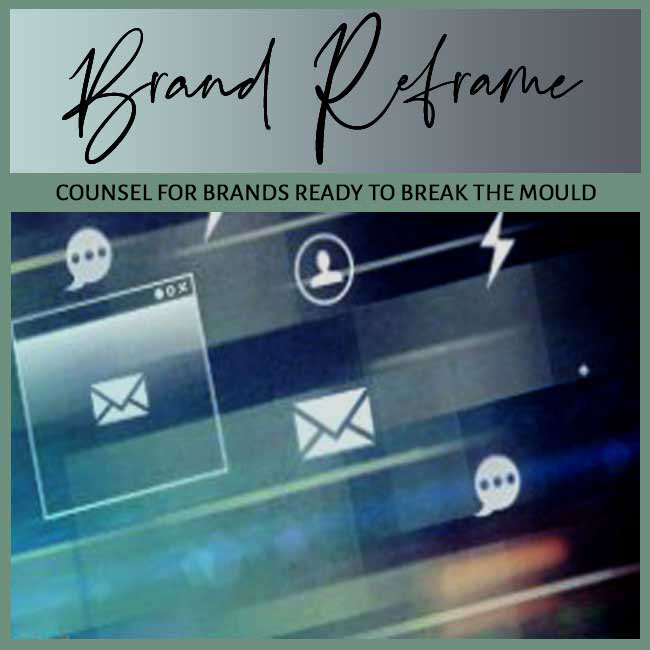
BY: SHOBHA PONNAPPA | BRAND BREAKTHROUGH STRATEGIST | 45 YEARS | 125+ CLIENTS
Brand positioning is the deliberate act of defining how you want your brand to be perceived in the minds of your ideal customers. It clarifies your place in the market and sets the terms of comparison against competitors. Strong positioning tells customers exactly why to choose you over others. Without it, brands become forgettable and compete mainly on price. Clear positioning guides every decision, from product design to messaging. It builds the mental space where your brand lives.
In my work with many companies, I’ve seen positioning act as the backbone of sustainable growth. Brands with clear positioning know who they serve and why they matter. Their marketing feels focused, and their teams rally behind a single idea. Weak positioning causes scattered strategy and diluted impact. It confuses employees, frustrates customers, and wastes resources. Restoring clarity can unlock immediate traction and long-term resilience.
Markets today are saturated with near-identical choices. Customers scan fast, compare alternatives, and decide in seconds. Only well-positioned brands cut through the noise and stay remembered. In the past, distribution reach or sheer spend could build a presence; now positioning is the main differentiator. Online reviews and social media amplify clear narratives while exposing vague ones. Positioning has become a survival strategy.
Investors and partners look for brands that own a defensible place in the market. A clear position signals focus and lowers risk. It enables premium pricing and efficient marketing spend. Strong positioning drives loyalty and pricing power. Without it, even innovative products fade into sameness. In a transparent world, clarity is the new moat.
Positioning starts by knowing exactly who you serve. Generalised targeting leads to bland messages that fail to resonate. A precise audience focus creates relevance and depth. Understand their needs, values, and aspirations deeply. Segmentation is about psychographics as much as demographics. Sharp focus helps you stand out.
Brands that overreach by targeting everyone often struggle to connect. When you define a clear primary customer, you unlock language, imagery, and solutions that feel personal. Teams align around a shared mental picture of the buyer. Focused targeting makes strategy more effective. Over time, this clarity attracts adjacent audiences organically. Precision builds credibility.
Every brand must claim a unique promise or benefit that matters to its audience. This goes beyond features to the transformation or outcome you deliver. A clear, unique value proposition shapes customer decisions quickly. It tells buyers why your offer is better or different. Strong value helps avoid price wars. It becomes the anchor for storytelling.
Leaders should craft this proposition with customer language, not internal jargon. Test it until customers can repeat it easily. Keep it simple but meaningful. Memorable promises drive preference. As markets evolve, revisit and refine without losing core truth. A well-kept promise builds long-term equity.
Positioning also means deciding what category or space you compete in. Defining the right competitive set shapes how people compare you. If you pick the wrong frame, your strengths may look irrelevant. A bakery positioned against mass grocery chains will fight on price; positioned as artisanal craft, it wins on experience. The frame controls expectations.
Study competitors deeply and choose your playing field intentionally. Sometimes redefining the category gives huge advantage. This decision informs pricing, storytelling, and channels. Owning your category boosts authority. Over time, you teach customers new ways to evaluate value. Smart reframing disrupts entrenched markets.
Positioning is not just a tagline; it must live in every touchpoint. Advertising, packaging, service, and culture should all express the chosen stance. Inconsistency weakens positioning and erodes trust. Customers expect proof of claims in every interaction. Mixed messages confuse and repel. Alignment turns strategy into reality.
Leaders must audit channels for message drift and gaps. Training and guidelines help teams stay true to positioning. Experience should validate the promise every day. Lived positioning builds strong reputations. Consistency also makes marketing more efficient over time. Without it, campaigns fail to move perception.
Start by deeply understanding your target customer and competitive context. Define what unmet need or aspiration you can uniquely satisfy. Craft a clear, defendable positioning statement that teams can rally behind. Avoid copying market leaders blindly. Instead, carve your own lane. Document decisions to guide all functions.
Validate your positioning through customer testing and real-world pilots. Listen for emotional reactions and ease of recall. Refine based on data but stay true to your intended edge. Strong initial clarity avoids expensive pivots later. Early hires and partners should align with the positioning vision. This foundation supports scale without confusion.
If your brand feels scattered, start by mapping current perception. Ask customers how they describe you and compare with your intended image. Identify gaps between promise and perception. Analyse competitors to find white space. Often the fix is simplification rather than reinvention. Clarity beats cleverness when repairing confusion.
Once gaps are clear, sharpen your positioning statement. Remove vague or conflicting claims. Focus messaging and experience to reinforce the new stance. Leaders must embody and communicate the refreshed position. Internal buy-in is critical for credibility. Gradual, consistent rollout rebuilds trust.
One trap is trying to be everything to everyone. This leads to shallow messaging and weak resonance. Another mistake is changing positioning too frequently. Consistency builds equity; constant shifts confuse markets. Fear of commitment kills brand identity. Leaders must stay disciplined even under pressure.
Ignoring internal culture is another silent risk. Positioning cannot survive if teams don’t believe or live it. Also, overcomplicating the message reduces memorability. Simplicity wins attention and recall. Brands that ignore customer language sound self-focused. Keeping it human and clear sustains power.
A fintech start-up struggled to stand out in crowded payments. I repositioned it from generic processor to champion for small creative businesses. This sharper focus won passionate loyalty and media coverage. Owning a niche created instant clarity. Partnerships expanded because the audience was well-defined. Growth accelerated with lower acquisition cost.
A complex platform confused prospects with endless features. I helped craft a simple promise: compliance made effortless for mid-sized firms. Sales cycles shortened as buyers understood value fast. Clarity replaced complexity and drove trust. Teams unified around one mission. Marketing spend became more efficient.
A long-established furniture brand competed on price with big box stores. I repositioned it as heirloom craftsmanship for modern homes. Customers embraced the emotional and design-led narrative. Reframing category lifted margins and loyalty. Media reappraised the brand as premium. Profitability improved steadily.
The start-up tried to serve everyone and failed to gain traction. I focused sharply on urban young professionals seeking personalised wellness. Messaging, channels, and partnerships aligned to this persona. Precise targeting turned growth around. Customer engagement and retention soared. Investors noticed renewed momentum.
A retailer kept chasing trends and lost identity. I guided them back to their original promise of affordable style for everyday women. Campaigns became consistent and compelling again. Reclaiming roots restored relevance. Sales improved and employee pride returned. The brand regained its loyal base.
A charity was lost among countless similar appeals. I defined its positioning as unlocking potential in underserved youth. Stories, visuals, and programs all aligned. Clear voice attracted new donors and partners. Media covered the unique angle widely. Fundraising became more sustainable.
If customers describe you inconsistently, sales rely on discounts, or marketing feels scattered, positioning is weak. Confused employees are another warning. Weak positioning shows in low loyalty and unclear differentiation. Tracking perception through surveys helps diagnose issues. Competitive analysis often reveals missed white space. Clear focus usually drives immediate improvement.
Yes. Many brands refresh positioning and thrive. It requires honest assessment, strategic simplification, and disciplined rollout. Successful repositioning balances change with core continuity. Teams must be engaged early. Communication must be clear and sustained.
Yes, but with intention. Core promise should stay stable while expression adapts to new contexts. Abrupt change confuses and alienates. Planned evolution keeps brands relevant and trusted. Leaders should monitor market shifts and adjust slowly. Customers respect consistency paired with freshness.
It depends on scale and market complexity. Some narrative adjustments show results in months, but deep repositioning can take years. Alignment across teams speeds the process. Patience and consistency build credibility. Sudden flips rarely hold. Phased transition helps customers adjust.
Absolutely. Strong positioning reduces wasted spend, improves pricing power, and drives loyalty. Investors see it as a moat. Clear positioning supports growth and profitability. It guides better product and channel choices. Over time, it compounds competitive advantage.
They look for clarity, defensibility, and customer resonance. Confusing or copycat positions signal risk. Unique, ownable stances feel safer and more valuable. Investors reward brands with sharp, credible positions. Evidence of loyalty and pricing strength builds confidence. Strong positioning is a growth signal they trust.
Explore Brand Positioning Gaps … Real Cases & Fixes
Case Studies
FAQ Insights

"One BIG IDEA can turn brand stagnation into unstoppable movement. Spots are limited each week ... book your breakthrough session now."
Shobha Ponnappa
My Definitive Guides to Other Critical Branding Concepts
Smart insights, real-world frameworks, and idea-driven clarity – designed to help brands move.
Get my fortnightly Brand Reframe newsletter. Smart insights, distilled thinking, and focused momentum to help your brand lead.

Get my free AI strategy guide. Smart prompts, sharper briefs, and practical ways to make AI support your brand momentum.

Just fill in the form to join. Get my newsletter and the guide shown alongside, all with several game-changing tips.